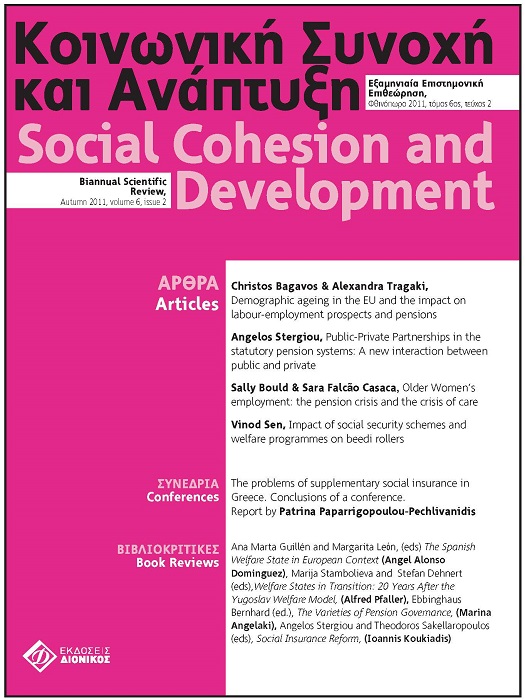Public-Private Partnerships in statutory pension systems: A new interaction between the public and the private sectors

Abstract
The article argues that not every publicprivate partnership on the field of pensions is considered to be positive per se; the decisive criterion is the institutional framework within which such a partnership is being realized. The factor that causes them to differ is the adequacy of the rules materializing a partnership as such. This explains why our main point of interest focuses upon the respective regulative aspects and the necessary/ consequent statutory guarantees. Taking this as our starting point, the Swedish model constitutes an example of good practice. The Swedish version of the public-private partnership in the statutory pension system appears as the best solution for specific sorts of systems, such as the individual accounts. In being transparent, guaranteeing prudent investments and in offering the minimum possible cost for employees, it embodies a wide range of advantages.
Article Details
- How to Cite
-
Stergiou, A. (2011). Public-Private Partnerships in statutory pension systems: A new interaction between the public and the private sectors. Social Cohesion and Development, 6(2), 103–116. https://doi.org/10.12681/scad.10066
- Issue
- Vol. 6 No. 2 (2011)
- Section
- Articles

This work is licensed under a Creative Commons Attribution-NonCommercial-ShareAlike 4.0 International License.
Authors who publish with this journal agree to the following terms:
- Authors retain copyright and grant the journal right of first publication with the work simultaneously licensed under a Creative Commons Attribution Non-Commercial License that allows others to share the work with an acknowledgement of the work's authorship and initial publication in this journal.
- Authors are able to enter into separate, additional contractual arrangements for the non-exclusive distribution of the journal's published version of the work (e.g. post it to an institutional repository or publish it in a book), with an acknowledgement of its initial publication in this journal.
- Authors are permitted and encouraged to post their work online (preferably in institutional repositories or on their website) prior to and during the submission process, as it can lead to productive exchanges, as well as earlier and greater citation of published work (See The Effect of Open Access).


